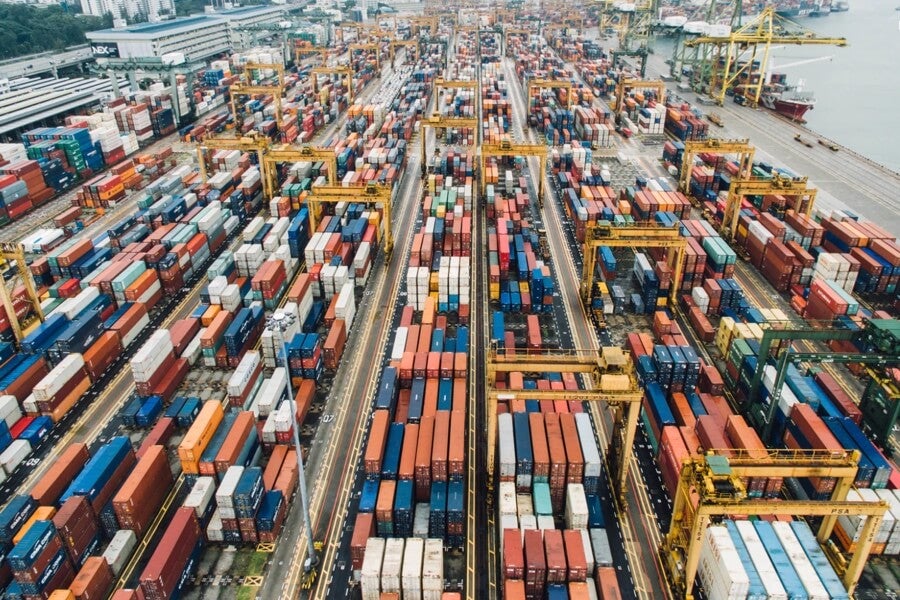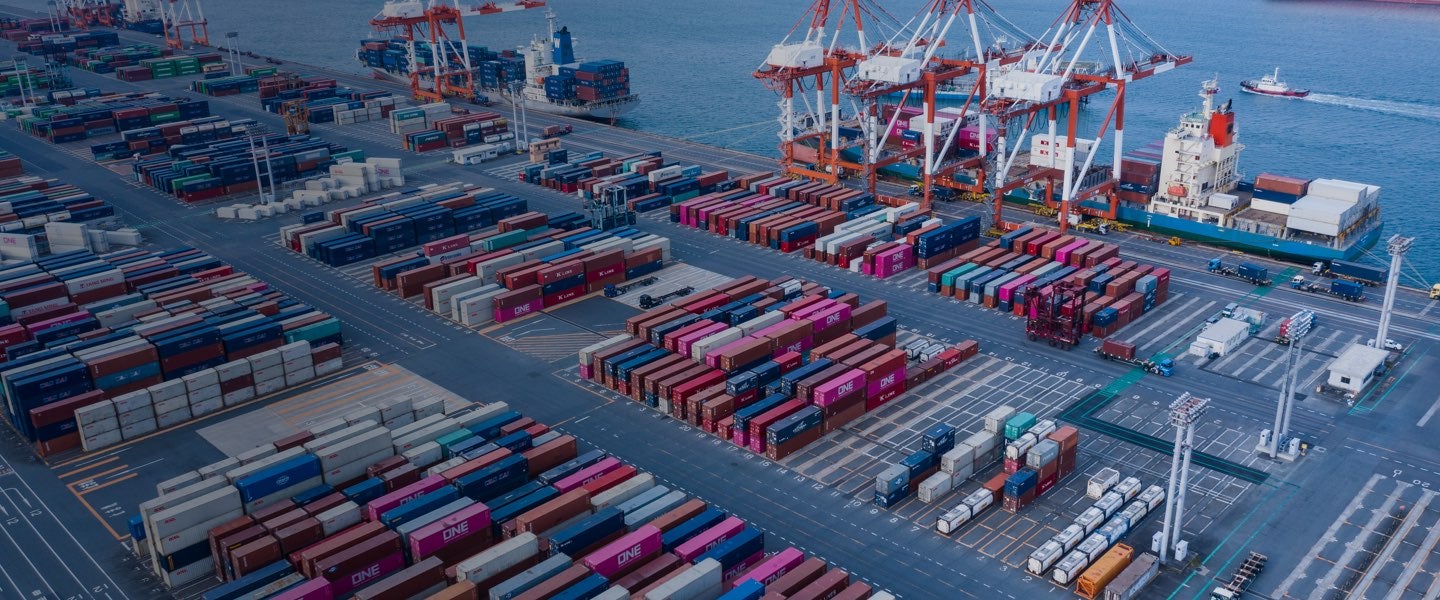Navigate Cargo Risk
Protect against unexpected cargo catastrophe loss by exploring the diversity of products, mobility of exposures, and specificity of policy provisions unique to the marine market.
Monitor Problematic Accumulations
Identify vulnerable concentrations of static cargo and measure port accumulations using detailed insights into cargo fragility and exposure accumulation.
Capture Critical Data
Collect and effectively analyze marine cargo and specie data that cannot be implemented in standard property catastrophe models.
Time and Seasonality
Analyze dwell time of specific product types and cargo seasonality of a port to understand the average and peak exposure at risk.
Marine-Specific View
Better understand your marine cargo and specie risks using a modeling framework designed for the marine market’s needs.
Related Products



Regional and Country Marine Cargo and Specie Models
Regional Models
Click a region on the interactive map to see coverage.

North America Marine Cargo and Specie
-
Canada
-
Mexico
-
United States
Europe Marine Cargo and Specie
-
Andorra
-
Austria
-
Belgium
-
Bulgaria
-
Czech Republic
-
Denmark
-
France (including Monaco)
-
Finland
-
Germany
-
Greece
-
Hungary
-
Ireland
-
Italy (including San Marino and Vatican City)
-
Liechtenstein
-
Luxembourg
-
Netherlands
-
Norway
-
Poland
-
Portugal (including Madeira Islands)
-
Romania
-
Slovakia
-
Slovenia
-
Spain (including Canary Islands)
-
Sweden
-
Switzerland
-
Turkey
-
United Kingdom
Asia-Pacific Marine Cargo and Specie
-
Australia
-
China
-
Hong Kong
-
India
-
Indonesia
-
Japan
-
Macau
-
Malaysia
-
Philippines
-
Singapore
-
South Korea
-
Taiwan
-
Thailand
-
Vietnam
Latin America Marine Cargo and Specie
- Caribbean
-
Anguilla
-
Antigua & Barbuda
-
Aruba
-
Bahamas
-
Barbados
-
Bermuda
-
Bonaire
-
British Virgin Islands
-
Cayman Islands
-
Cuba
-
Curacao
-
Dominica
-
Dominican Republic
-
Grenada
-
Guadeloupe
-
Haiti
-
Jamaica
-
Martinique
-
Montserrat
-
Puerto Rico
-
Saba
-
Sint. Maartin
-
St. Barthelemy
-
St. Eustatius
-
St. Kitts and Nevis
-
St. Lucia
-
St. Martin
-
St. Vincent and the Grenadines
-
Trinidad & Tobago
-
Turks & Caicos
-
U.S. Virgin Islands
- Central America
-
Belize
-
Costa Rica
-
El Salvador
-
Guatemala
-
Honduras
-
Nicaragua
-
Panama
- South America
-
Argentina
-
Bolivia
-
Brazil
-
Chile
-
Colombia
-
Ecuador
-
Peru
-
Venezuela
North America
Latin America
Europe
Asia-Pacific
North America Marine Cargo and Specie
-
Canada
-
Mexico
-
United States
Europe Marine Cargo and Specie
-
Andorra
-
Austria
-
Belgium
-
Bulgaria
-
Czech Republic
-
Denmark
-
France (including Monaco)
-
Germany
-
Greece
-
Hungary
-
Ireland
-
Italy (including San Marino and Vatican City)
-
Liechtenstein
-
Luxembourg
-
Netherlands
-
Norway
-
Poland
-
Portugal (including Madeira Islands)
-
Romania
-
Slovakia
-
Slovenia
-
Spain (including Canary Islands)
-
Sweden
-
Switzerland
-
Turkey
-
United Kingdom
Asia-Pacific Marine Cargo and Specie
-
Australia
-
China
-
Hong Kong
-
India
-
Indonesia
-
Japan
-
Macau
-
Malaysia
-
Philippines
-
Singapore
-
South Korea
-
Taiwan
-
Thailand
-
Vietnam
Latin America Marine Cargo and Specie
- Caribbean
-
Anguilla
-
Antigua & Barbuda
-
Aruba
-
Bahamas
-
Barbados
-
Bermuda
-
Bonaire
-
British Virgin Islands
-
Cayman Islands
-
Cuba
-
Curacao
-
Dominica
-
Dominican Republic
-
Grenada
-
Guadeloupe
-
Haiti
-
Jamaica
-
Martinique
-
Montserrat
-
Puerto Rico
-
Saba
-
Sint. Maartin
-
St. Barthelemy
-
St. Eustatius
-
St. Kitts and Nevis
-
St. Lucia
-
St. Martin
-
St. Vincent and the Grenadines
-
Trinidad & Tobago
-
Turks & Caicos
-
U.S. Virgin Islands
- Central America
-
Belize
-
Costa Rica
-
El Salvador
-
Guatemala
-
Honduras
-
Nicaragua
-
Panama
- South America
-
Argentina
-
Bolivia
-
Brazil
-
Chile
-
Colombia
-
Ecuador
-
Peru
-
Venezuela
Resources

Hurricane Harvey: Impact on Marine Cargo
As Hurricane Harvey barreled eastward from Houston, Port of Houston officials spoke of restarting operations by Labor Day (Monday, September 4) after its channels are checked for shoaling and obstructions. The eighth busiest container port in the U.S. reported no major damage to its terminals, warehouses or storage facilities, and traffic was diverted to other regional ports and processing facilities away from the storm’s path. Maritime officials, it seems, have learned lessons from Superstorm Sandy, where ...

No More Guessing Games for Marine Insurers
Huge ports mean huge amounts of cargo. Huge amounts of cargo mean huge accumulations of risk. As a guiding principle about where marine insurers are exposed to the highest potential losses, it seems reasonable enough. But in fact, as RMS research has proven this week, this proposition may be a bit misleading. Surprisingly, a port’s size and its catastrophe loss potential are not strongly correlated. Take the Port of Plaquemines, LA which is just south-east of New Orleans. It is neither well known nor ...

Tianjin Is a Wake-Up Call for The Marine Industry
“Unacceptable” “Poor” “Failed” Such was the assessment of Ed Noonan, Chairman and CEO of Validus Holdings, on the state of marine cargo modeling, according to a recent report in Insurance Day. The pointed criticism came in the wake of the August 12, 2015 explosions at the Port of Tianjin, which caused an estimated $1.6 – $3.3 billion in cargo damages. It was the second time in three years that the cargo industry had been “surprised”—Superstorm Sandy being the other occasion, delivering a hefty $3...

Fins the right business solution for you



